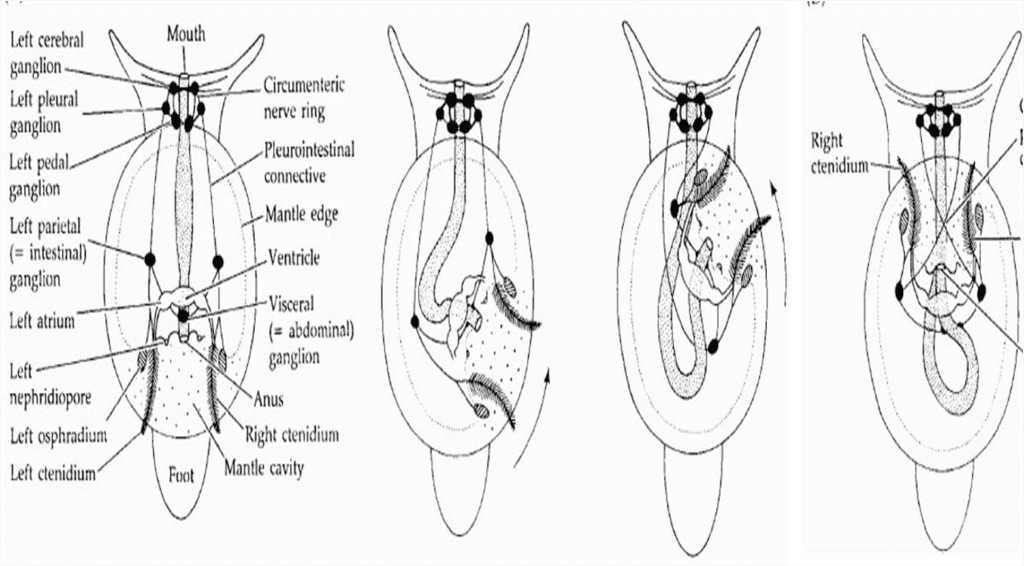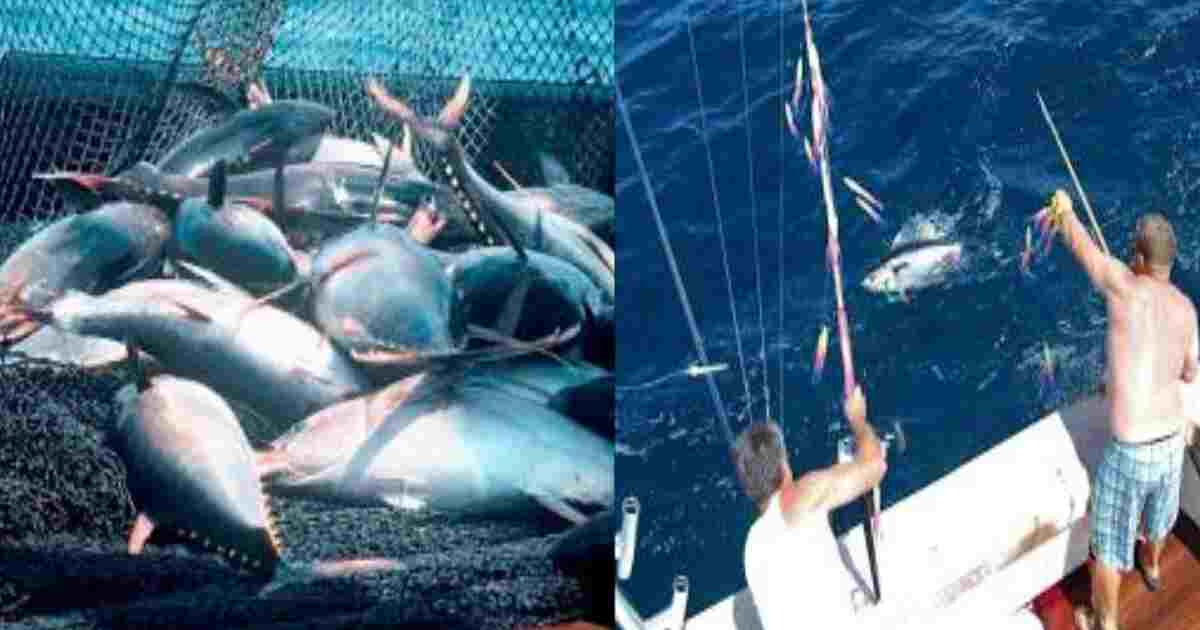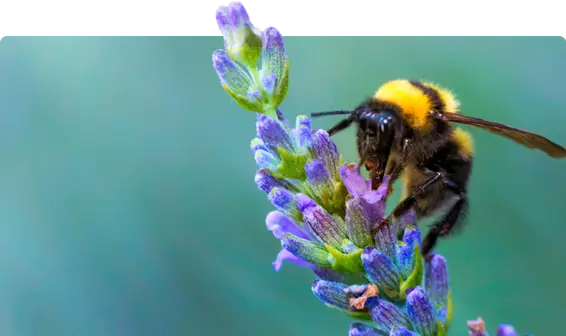Torsion in gastropods: It is a unique developmental process in which the visceral mass, mantle, and shell rotate 180 degrees counterclockwise relative to the head and foot during the larval stage. This causes the mantle cavity and anus to move from a posterior to an anterior position above the head, transforming the originally bilaterally symmetrical larva into an asymmetrical adult. The torsion typically occurs in two stages: an initial rapid 90-degree rotation caused by contraction of larval retractor muscles, followed by a slower 90-degree rotation due to differential growth.
Torsion in gastropods

Torsion is the rotation of the visceral mass and foot 180 degrees with respect to the head and foot, and is a unique synapomorphy of modern gastropods. Torsion occurs during development in all gastropods, usually in the late veliger stage. However, some gastropods do not remain torted when becoming adults.
Effect of Torsion:
1. Position of organs in pre-torsional stage:
Posteriorly located mantle cavity opens backward; mouth and anus at opposite ends; ctenidia pointed backwards; auricles behind the ventricle; nervous system bilaterally symmetrical; coiled visceral sac and shell dorsal or exo-gastric.
Position of organs in post-torsional stage:
Mouth cavity opens in front just behind the head; gut assumes U-shape; anus lies in front near mouth; ctenidia shifted to front, directed backwards, the right one shifted to the left and vice versa, the auricles become anterior to the ventricle and the position changed—right to left and vice versa; nervous system becomes twisted into a figure of ‘8’ by crossing of the pleurovisceral connectives; coil of visceral sac and shell become ventral or endogastric. ‘Torsion in gastropods‘
Significance of Torsion:
Author are in agreement that torsion is the result of a larval mutation but they do not agree on the advantage of such mutation restricted only to the larva or extends to the adult.
1. Due to torsion the mantle cavity becomes anterior and the sensitive parts of the anterior end including the head and also the foot of the larva could be withdrawn into the mantle cavity at the approach of danger. Garstang (1928) holds that torsion represents a larval mutation, which is of advantage to the larva and not the adult, a concept shared by Yonge (1947).
By rotation the anteriorly placed mantle cavity provides a refuge for the delicate head and velar lobes of the larva, and it is not directly advantageous to the adult.
2. Morton (1958) believes the final effects of torsion due to larval mutation are profound in the adult snails though in a different way:
a. Torsion promotes stability in the adult by bringing the body of the snail nearer to substratum.
b. The free flow of respiratory water current in the posteriorly located mantle cavity containing the gills is obstructed by the back- flow of water current during upstream movement of the snail. In reverse situation, anteriorly placed mantle cavity is continuously flushed with fresh water current. ‘Torsion in gastropods‘
c. The forward position of the receptors enables the snail to scan the surroundings and also test the quality of water and mud.
Read More : Phylum Mollusca




